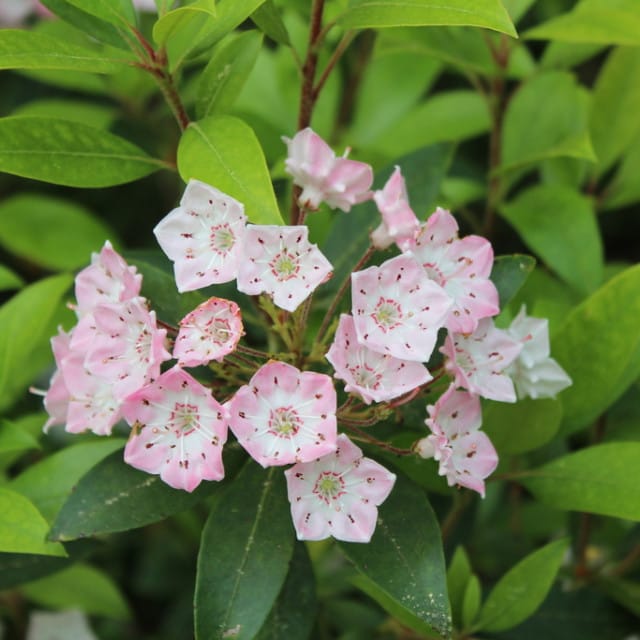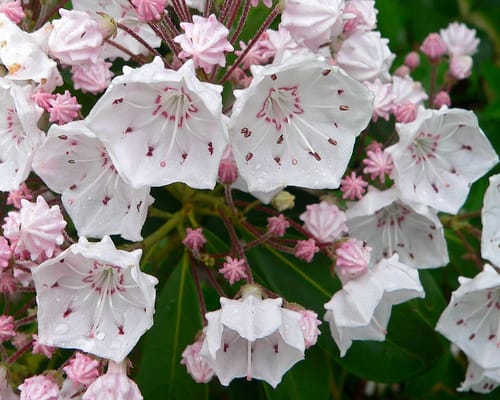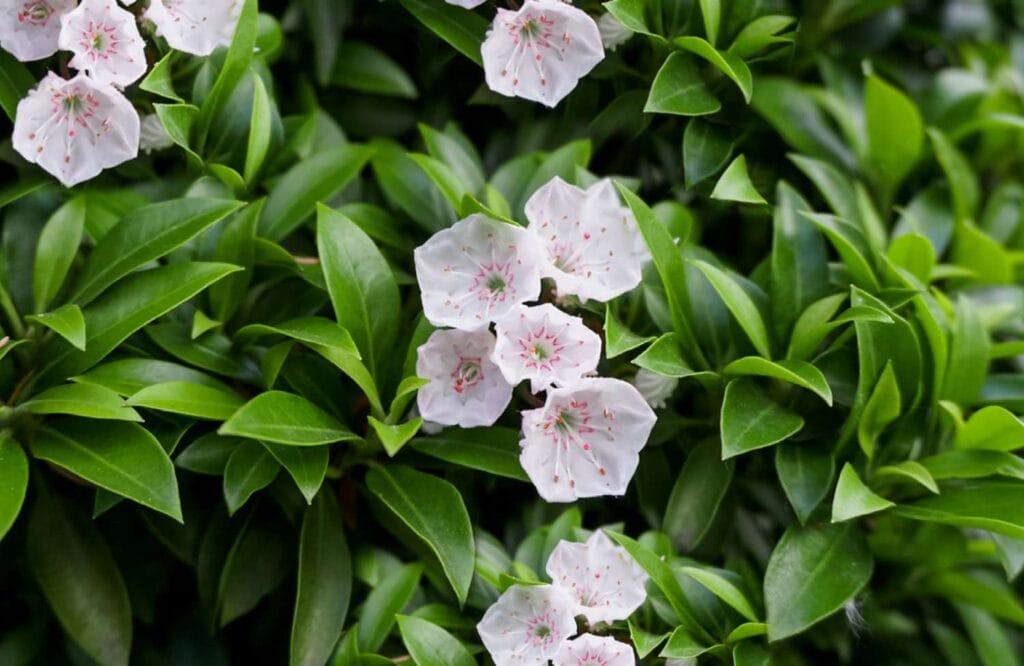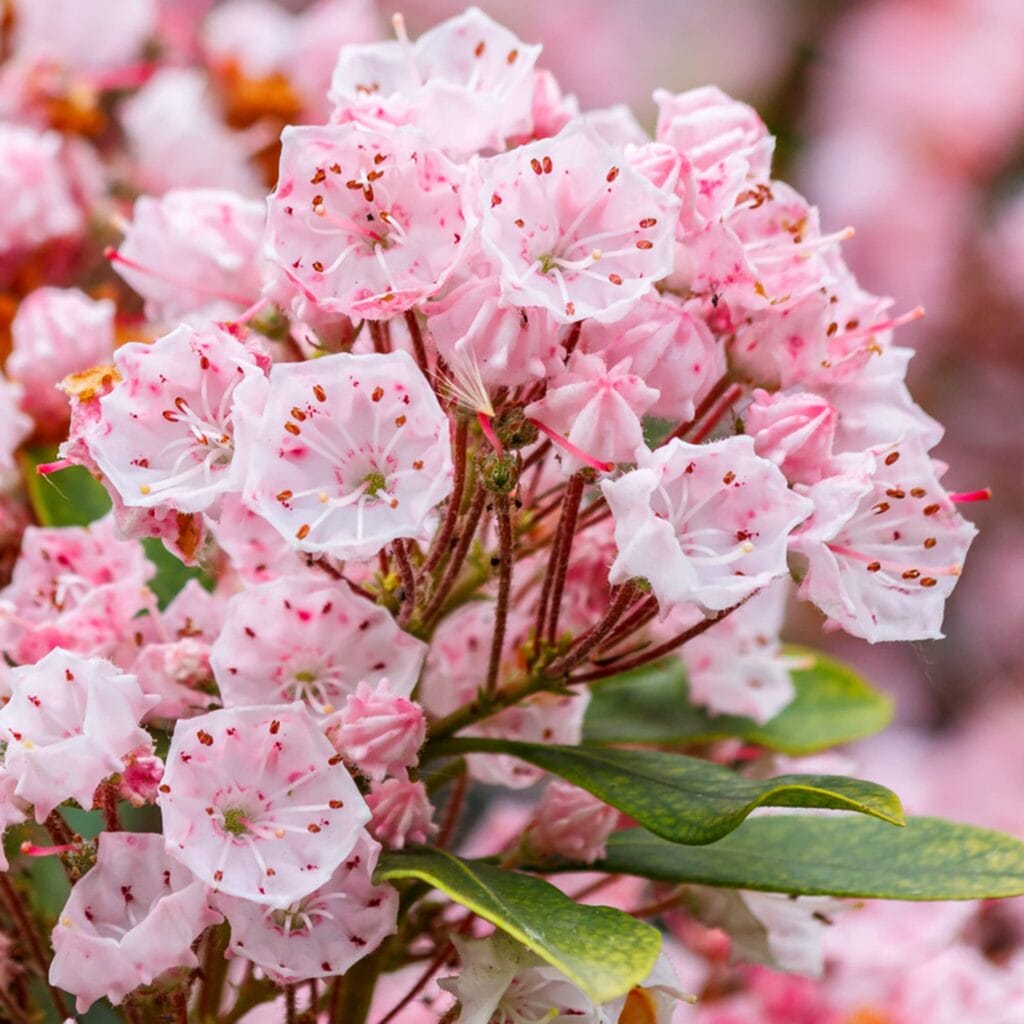Landscaping Ideas
Mountain Laurel
By Innovation Grounds
The Mountain Laurel (scientific name: Kalmia latifolia) is a beautiful evergreen shrub or small tree native to North America. It belongs to the heath family (Ericaceae), and it is especially known for its striking flowers and attractive foliage.
General Information
- Scientific Name: Kalmia latifolia
- Common Names: Mountain Laurel, Spoonwood, Calico Bush
- Family: Ericaceae
- Native Range: Eastern United States, from Maine to Georgia, and west to Alabama and Tennessee
- Hardiness Zones: 4-9 (USDA)
- Height: Typically 4-15 feet (1.2-4.5 meters), but can grow up to 30 feet in some cases
- Spread: 4-15 feet (1.2-4.5 meters)
- Lifespan: Can live for several decades

Growing Conditions
- Sunlight: Prefers partial shade to full sun (though it may flower more profusely in areas with some shade).
- Soil: Acidic, well-drained soil with a pH between 4.5 and 6.0. It prefers slightly moist, sandy, or loamy soils, and it doesn’t thrive in heavy clay soils.
- Watering: Requires consistent moisture, but it is somewhat drought-tolerant once established. It’s important to avoid waterlogged soils as Mountain Laurel is susceptible to root rot in overly wet conditions.
- Pruning: Best pruned right after flowering. Pruning in late summer or fall can remove next year’s buds, preventing flowering.

Landscape Use
- Ornamental Plant: Mountain Laurel is commonly planted in woodland gardens, shady areas, and as a hedge or border. Its vibrant flowers make it a favorite for ornamental landscaping.
- Pollinators: The flowers attract pollinators like bees, butterflies, and hummingbirds.

Additional Notes
- Cultural Significance: Mountain Laurel is the state flower of Connecticut and Pennsylvania, reflecting its importance in regional flora.
- Natural Habitat: In its natural habitat, it can be found growing in woodland areas, particularly in mountainous regions, on slopes, or along forest edges.


